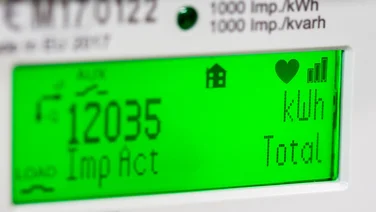- The case for low-carbon transport choices
- 8 steps towards low-carbon transport
- 1 - Live car-free
- 2 - Invest in a battery electric vehicle (BEV)
- 3 - Take one less long-haul flight a year
- 4 - Take one less medium-haul flight a year
- 5 - Shift to public transport
- 6 - Embrace active transport
- 7 - Work from home more
- 8 - Carpool
- How to take action today
- The domestic transport sector is the biggest contributor to the UK’s carbon emissions
- Taking fewer flights and lowering your reliance on personal vehicles are some of the most impactful changes you can make
- Smaller changes like embracing public transport and using Uber Pool make a difference too
- The Action Wheel offers guidance getting around more sustainably

According to some studies, as many as 88% of people in the UK want to do more to support the environment. If you’re one of them, rethinking how you get from A to B could be a great place to start.
The domestic transport sector – that means those of us who travel around the UK – accounts for 29% of all UK emissions, according to the government.
While investing in low-carbon tech such as solar panels is the best way to cut your carbon emissions long term, changing how you travel can really help as well.
That means finding greener ways to travel is one of the first steps you should take to cut your carbon footprint. From sacrificing long-haul flights to reconsidering your daily commute, knowing which actions to take can be a major roadblock to taking action.
That’s where The Action Wheel comes in. Here, we guide you through eight steps you can take to reduce travel emissions, breaking them down into simple, bite-sized actions.
The case for low-carbon transport choices
Even if you aren’t able to radically change your transport choices, every mile travelled differently, and every journey reconsidered, adds up to a substantial positive change.
Domestic transport accounts for 29% of carbon emissions in the UK, making it the single biggest contributor, with 110.1 million tons of CO2 output in 2024 alone.
Within this, road transportation is the main culprit, making up the vast majority (around 89%) of UK domestic greenhouse gas (GHG) emissions.
While the UK has made strides to dent these emissions, changes also need to be made at an individual level if we have any hope of decarbonising how we get around.
Beyond tackling the climate crisis on a global scale, decreasing our reliance on carbon-hungry transport options also benefits local communities by contributing to better air quality, less traffic, and an overall healthier environment for people to live in.
Let’s take a look at 8 simple actions we take to reduce our emissions through transport.

8 steps towards low-carbon transport
Make an immediate difference to your carbon footprint, one journey at a time, with these useful steps from the Low-Carbon Action Wheel.
1 – Live car-free
While this action isn’t feasible for everyone, getting rid of your car is probably the most impactful transport-based action you can take for the environment. In fact, research from Imperial College London found it could cut down someone’s travel emissions by as much as a quarter.
- Take public transport – Research the local public transport options in your area to see if you’re able to use different transit methods to move around. If they serve your route, increase your reliance on public transportation.
- Sell your current vehicle – Don’t scrap your car after you’re done with it. Selling your vehicle for reuse extends its life and delays the need for a new one to be manufactured.
- Walk or cycle short distances – Instead of driving to local destinations like shops or restaurants, consider walking or cycling.
2 – Invest in a battery electric vehicle (BEV)
If going car-free isn’t realistic, switching to a battery electric vehicle (BEV, or just an EV) like a BYD or Nissan Leaf is a solid alternative. BEVs are charged by the power grid. This means they produce zero tailpipe emissions and are generally much more environmentally friendly than petrol-powered cars.
- Test drive an electric vehicle – Research the EVs available in your area. Compare models, and make sure you give the car a test drive to assess its real-world suitability.
- Purchase an electric vehicle – If you’re happy with the test drive, discuss financing options with the dealership. It’s also worth checking if you’re eligable for a government grant or rebate during this stage.
- Locate plug-in charging stations – Use apps like Zapmap or E.ON Drive Comfort to locate charging stations and to plan your future routes.
100% of cars and vans must be zero emissions by 2035. Fortunately, recent government mandates are making it easier than ever for UK car manufacturers to start producing electric vehicles, making it a great time to invest in carbon-friendly vehicles.
Learn more about the rapidly evolving electric vehicle market here.
3 – Take one less long-haul flight a year
Flying is one of the most carbon-intensive activities we can do. Each flight adds up, especially long-haul flights lasting between six and 12 hours. While cutting out air travel altogether may not be feasible for everyone, the Action Wheel recommends taking less long flights when possible.
- Attend virtual conferences – If you’ve been asked to attend a conference abroad, ask your employer if there’s an option to attend virtually instead.
- Go on local breaks instead – Travelling locally is a much more sustainable way to spend your holidays. There are tons of gems in the UK and Europe which are accessible by train or coach.
- Combine business and leisure trips – Merging your work and personal holidays is a clever way to reduce your air miles, without sacrificing travelling to far-flung locations.
4 – Take one less medium-haul flight a year
The average plane journey releases the equivalent of 102g of CO2 each kilometre. The same principle applies to making medium-haul flights, lasting anywhere from three to seven hours.
- Consider staycations – Instead of travelling abroad, explore the beauty of your nearby regions. This form of travel has the additional upshot of saving you money, too.
- Explore ground travel options – If you’re able to travel to your destination by train or bus, you’ll significantly reduce your carbon footprint compared to flying.
- Opt for video conferencing – For business trips or family gatherings that involve flying, consider if a high-quality video call can achieve the same purpose.
5 – Shift to public transport
Taking a bus or train can dramatically cut carbon emissions by around 42%. Therefore, using modes of public transportation is inherently better for the environment than individual cars.
- Take public transport to work – Taking a train or bus to work is a great way to start lowering your reliance on cars. Start by identifying the most efficient public transport routes to your workplace using apps like Google Maps or Citymapper.
- Purchase a monthly or annual transit pass – Buying a season ticket or travel pass will make your journeys heaps more economical, and it will also encourage you to take public transport more.
- Use public transport for inner city travel – Most cities in the UK have excellent public transport networks. Hopping on a bus or tube instead of driving also helps to reduce pollution and congestion within urban areas.
6 – Embrace active transport
Active transport refers to any type of movement involving physical activity, like walking or cycling. Beyond the personal health benefits, it’s a great way to lessen your reliance on fossil fuels for everyday journeys.
- Buy a bicycle or scooter – Research different types of bikes and scooters that suit your needs and budget. Look for good-quality second-hand options to extend the lifespan of existing products.
- Walk and cycle short distances – Using your car for short journeys produces unnecessary emissions. Get into the habit of walking or cycling short distances by using online maps to see if the routes are accessible on foot or by bicycle.
- Subscribe to a bike sharing service – Bike sharing services like Lime, Santander, and Forest offer affordable ways to get from A to B in urban areas. To get started, download their app and locate the nearest docking station.
7 – Work from home more
Commuting, particularly from personal vehicles, is a major contributor to the UK’s carbon output. In addition to its environmental benefits, working from home can also positively benefit your work-life balance and reduce travel costs.
- Take work meetings virtually – Switching your default meeting status from in-person to virtual is a great way to start lowering your reliance on in-person workspaces.
- Create an equipped home office – Investing in your home area and purchasing equipment like laptop stands, ergonomic chairs, and monitors will make you less likely to travel to the office to access its amenities.
- Upgrade your home internet – A fast and stable internet connection is a non-negotiable for virtual meetings, so consider upgrading your provider if your service is buffering when you make calls
8 – Carpool
Carpooling is another high-impact action you can take to decrease your personal carbon footprint. It also tends to be more wallet-friendly than driving yourself places, due to shared fuel and parking costs.
- Subscribe to a car-share service – Services like Zipcar and Enterprise Car Club allow you to rent out vehicles for specific periods. They give you an option to drive to locations when you need to, while reducing the need for individual car ownership.
- Use UberPool – Uber offers a “Pool” service that matches you with drivers heading in the same direction, making your journey more cost-effective and sustainable. Similar options are available on apps like Lyft, too.
- Book a car-share in advance – Apps like BlaBlaCar help you organise car shares for longer journeys. Establishing a car-sharing group in your community is another way to make local journeys less carbon-intensive.
How to take action today
The journey to lowering your impact on the environment is a long one, and it can feel especially daunting in the beginning. The key is to start somewhere, build momentum, and find out what works best for you.
Here are some quick actions to help you get started.
- Choose one or two steps to get started with today, using the guidance above, based on your individual circumstances
- Start researching public transport routes using apps like Google Maps or Citymapper to lower your reliance on personal vehicles
- Keep a log of your low-carbon journeys to motivate you to make additional changes in the future
- Calculate how much money you’ll end up saving by embracing active transport or buying a transit pass, instead of driving your own car
Watch Lucy Shea, CEO of Futerra, talk about The Action Wheel on episode 8 of Positive Energy below:






